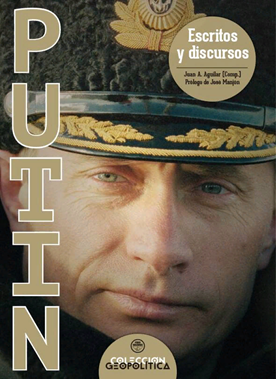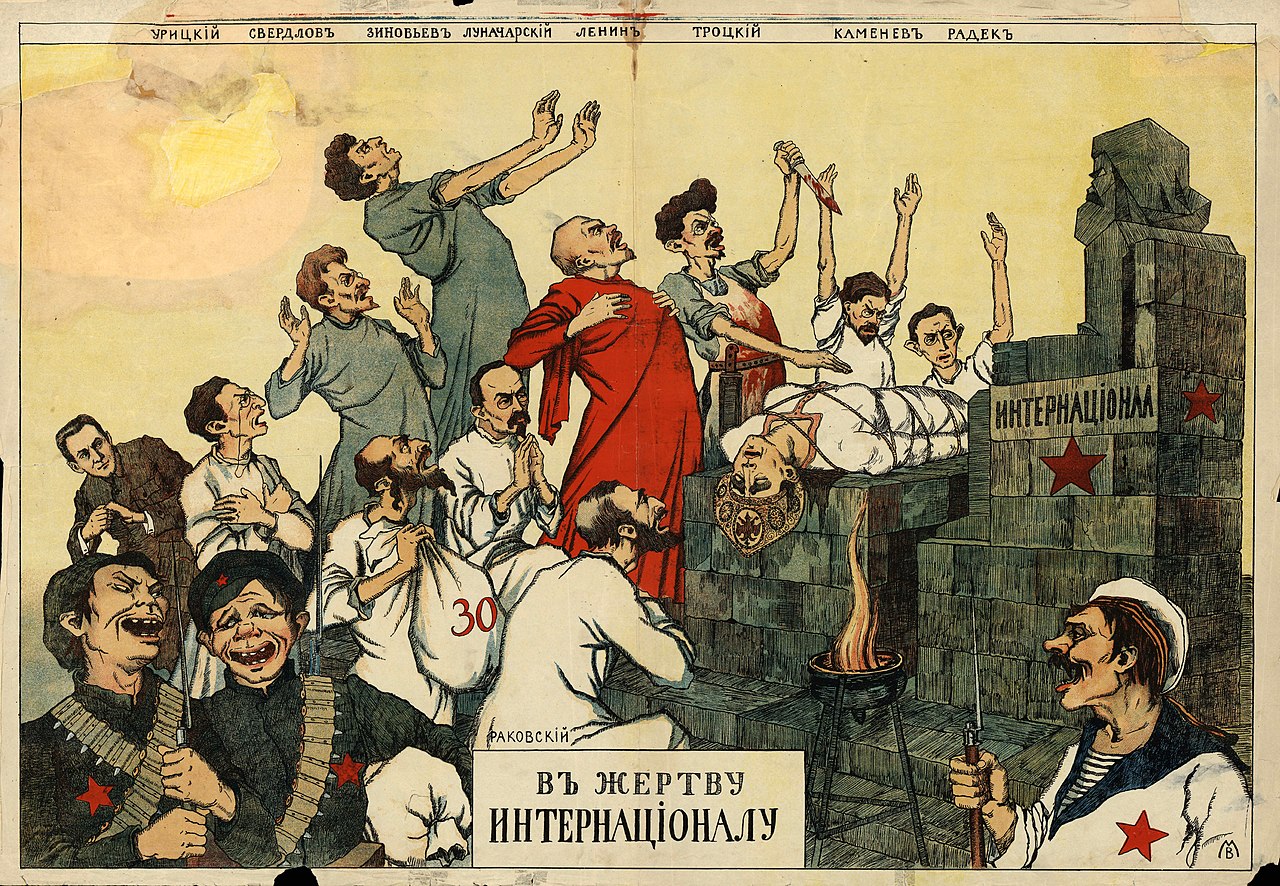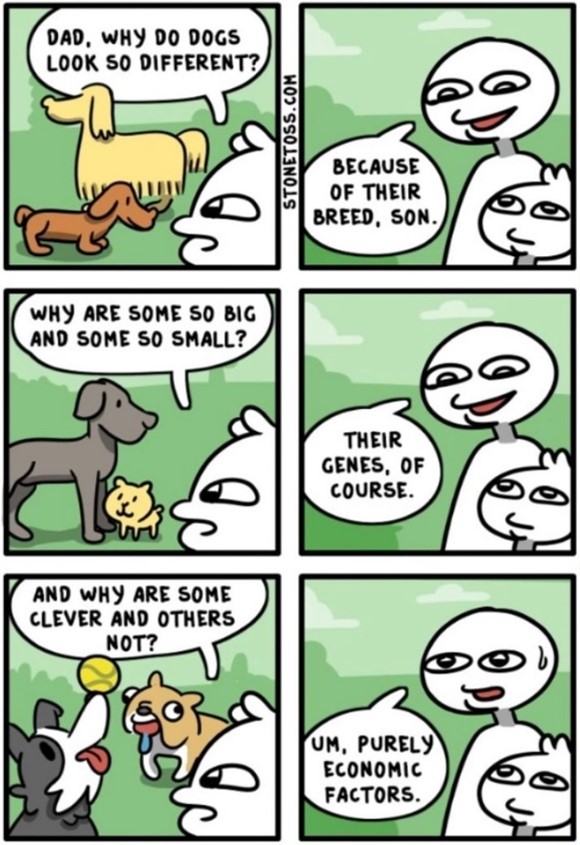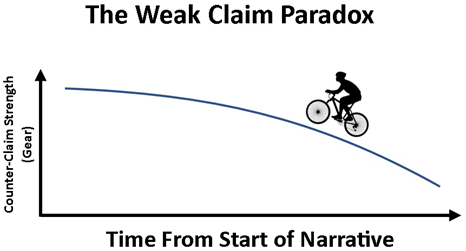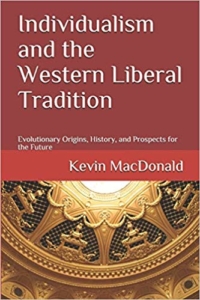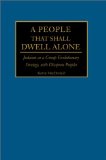Review of The Jewish Onslaught: Dispatches from the Wellesley Battlefront, Part 1

The fundamental, underlying motif of Jewish racism is an unwarranted assumption of Jewish superiority.
The Jewish Onslaught: Dispatches from the Wellesley Battlefront
Tony Martin
The Majority Press, 1993; Black Classic Press, 2022
I recently wrote an article on the very controversial The Secret Relationship Between Blacks and Jews: The Jewish Role in the Enslavement of Africans, which was published in 1991 without authorial attribution by the Nation of Islam. That book was a fusillade against the American Jewish community inasmuch as it drew attention to the outsized role that the Jews played in the African Atlantic slave trade. The Jews mounted a ferocious—and largely successful—effort to marginalize the book by characterizing it as antisemitic “pseudo-scholarship.” Indeed, some thirty years later, here is a typical refrain about how the work has been dismissed:
Mainstream scholars have on the whole rejected [The Secret Relationship Between Blacks and Jews]. In addition to the study by Faber cited above, refutations have been published by Davis, the Yale professor mentioned above, and Ralph Austen, an emeritus professor of African history at the University of Chicago. Winthrop D. Jordan, a history professor at the University of California, Berkeley, who specialized in slavery, wrote that the book employed shoddy scholarly methods and cherry-picked information, ignoring evidence that modified or countered its pre-ordained conclusion. Henry Louis Gates, director of the Hutchins Center for African and African American Research at Harvard University called the Nation of Islam’s book “one of the most sophisticated instances of hate literature yet compiled,” and charged that it “massively misrepresents the historical record.”
For my part as a lay historian, I am relatively well-read in the American Civil War, the antebellum South, and American slavery. Like most Americans of my generation, I share their disdain for the institution of slavery. While the history of African chattel slavery in the Americas is as loathsome as it is dehumanizing, the concept of slavery itself is a historically and economically complex practice. Its ubiquity and complexity, however, do not excuse its horror. If there is a maxim that we must live by, it should be that we never subject someone to something that we would not wish to abide by. And, at least for me in applying the Golden Rule, I can think of nothing worse than being subjected to slavery.
To be sure, I am sure that my visceral reaction to slavery is influenced by the historical epoch into which I was born—i.e., we live in an age that elevates maximal individual autonomy to the highest human good and therefore a systematic restraint of individual autonomy (slavery) must be seen, under that principle, as the lowest form of human institutions. In any event, I have studied chattel slavery enough to know it was a terrible and debasing economic and political structure. And even if I take issues with how the United States cured itself of chattel slavery (and I do)—and even if I take a more nuanced view of the war between the states (and I do)—and even if I abhor what the United States has become after it abolished slavery (which I do as well)—none of that flavors my opinion of chattel slavery itself.
Despite the modern historic gloss, Europeans neither invented slavery nor were its chief practitioners. Slavery has existed for as long as the stronger group prevailed over the weaker group, which is another way to say that slavery has existed since man was ejected from the Garden. That said, European involvement in the systematic practice of African slavery will forever be a mark of odium for us. That we constructed a multi-generational regime of chattel slavery tied to race is something for which we continue to pay a moral price—and increasingly, a price in crime and unending programs for uplifting the ancestors of slaves. It is something, pardon the pun, we own as a people and as a civilization. And there is an irony then—in this essay and the subject matter that it covers—that the Jews have self-deputized themselves as our moral lights to remind us of the horrors of what we, as a people, did. True enough, even though I don’t have a lineal ancestor in the United States before the twentieth century, I own it on behalf of my European people. That the Jews, however, should be our ethical guide in this matter is something altogether different and patently objectionable.
So, I approach the topic as neither an apologist for European slaving nor as someone naïve enough to believe that there is something congenital about us in terms of European slaving. It is a lamentable chapter in European history, but it is merely a chapter. All it says of us is that some of us were capable of inflicting collective and unjustified harm on others—and, at least in that, we are no different than any other group of people. The very doctrine of original sin, which posits that human beings (individually and collectively) have damaged moral compasses is validated when something like slavery is analyzed. Only morally damaged people could justify its perpetuation. I, therefore, own the history of my people like anyone else. All we can do—whether we are discussing the failures in our own lives or the collective failures of our people—is repent and resolve to do better. The study of history then is more than the collection of isolated facts but rather an opportunity for the Christian to be exposed to examples—both good and bad—to use them as a means by which personal growth and moral improvement are undertaken. And our failures, which are bound together in humanity’s congenital and spiritual failures, do not make me love my people any less. Like family, they are mine, warts, and all.
I had multiple reasons to read The Secret Relationship Between Blacks and Jews. It was an intersection of two of my historical interests: the Jews and the institution of slavery. In my study of the Jews, which has included both positive and negative portrayals, and in my study of slavery, I found The Secret Relationship Between Blacks and Jews to be both scholarly and persuasive. The thesis of the work is quite simple: the Jews, from the very beginning of the discovery of the New World, were dominant and instrumental in the Atlantic slave trade. They had no qualms about it or the dehumanization of Africans that accompanied it. The Jews were more involved with slaving, slave-trafficking, and slaveholding, at least on a proportionate basis, than non-Jews. Simply put, the point of the book is to highlight this outsized Jewish role in African slaving. As one might imagine, this enormous role is something that modern Jews would like to remain obscured and hidden. Unlike most guilt-ridden Euro-Americans, the Jews refuse to acknowledge their collective role in slavery. Not only do they not want to apologize for it, but they also evidently wish to deny it. It is the height of historical hypocrisy for the Jews to abuse others for the same moral failings that they enacted with enthusiasm. This is a type of gaslighting of the worst kind.
While the book has its blind spots, I marvel at the publication strategy of the Nation of Islam in three ways. First, it is bereft of authorship—it was merely written by the “Historical Department” of the Nation of Islam. This stratagem prevented the Jews and their minions from attacking the author(s) or his/their relative credentials as opposed to the work itself. In an alternate history, the author or authors, would have been the story—and we would remember this entire episode as the ultimate beatdown of “N” who dared to synthesize all the material that substantiates the outsized role of the Jews in enslaving and continuing the enslavement of Africans.
Second, The Secret Relationship Between Blacks and Jews is based upon, almost exclusively, the citation and use of past Jewish scholarship (albeit of an older vintage). This is where knowledge of the history of history, as it were, comes in handy. There was a time—before 1960—in which chattel slavery and its dehumanization of Africans was not as acutely detested as it is today. Today, we are horrified by chattel slavery and modern scholarship reflects that axiomatic moral gloss. What this means is that older scholarship—before the age of today’s moral grandstanding—could discuss the phenomenon of chattel slavery in a relatively dispassionate way. In this earlier milieu of slavery’s historiography, the accurate recounting of the role that the Jews—or anyone else—played in it did not subject them to special scorn—it was what it was. Earlier Jewish scholarship, which is always interested in Jewish history, simply laid out what the Jews did regarding slaving and slaveholding. If anything, prior Jewish scholars were impressed by the ability of the Jews to dominate something commercial like the trans-Atlantic slave trade. Moreover, slaveholding itself was a sign of wealth and having “arrived”—that the Jews owned slaves everywhere was a sign of their “arriving” and “arriving” splendidly in the New World. Little did they know that this economic and ethnic pride would later become such a historical liability for future generations of Jews. By relying on this older Jewish scholarship, the authors of The Secret Relationship Between Blacks and Jews managed to get a more unvarnished account of Jewish involvement, and they insulated themselves from relying upon “antisemitic” sources—indeed, no one can sensibly argue that Jewish historians from the late nineteenth or early twentieth centuries were antisemitic.
Third, The Secret Relationship Between Blacks and Jews makes no grand claims regarding the role of the Jews: it merely lays out the various ways in which the Jews were involved and dominated, at least at different periods, the importation and trading of slaves. It does not, for example, claim a special Jewish propensity for slave-trading nor does it assign a special Jewish moral disability for slave-trading either. In other words, it is not a work that makes a special claim of Jewish moral or genetic inferiority concerning their slaving—it simply was what it was. Rather, the whole of the work is a historical recitation of a particular people’s significant role in a commercial venture and system that we all take for granted now is odious. And, at least from a disinterested perspective, this is something that historians do all the time: they make their living, at least today, by splicing and reviewing historical phenomena from various angles and perspectives. Had any historian presented the special role that, for example, the Portuguese, the Spanish, or the Italians played in the African Atlantic slave trade, no one would have cared. Indeed, today, the more specialized the perspective, the more it is valued—so a dissertation, for example, of the role that Austrian candlemakers played in the trans-Atlantic slave trade is sure to have a ready audience (albeit specialized) and ready approval. Such scholarship would be deemed to be another contribution to the overall historical mix of our collective understanding of slavery. The only issue here is that the Nation of Islam had the temerity to focus upon the Jews, which is unforgivable under current conditions.
The Nation of Islam wanted to publish this work presumably for three reasons. First, it adds to the scholarship of slavery, which is something that all Black nationalists wish to see expanded. Second, they probably wanted to expose the fact that the Jews’ role in African Atlantic slavery has been “airbrushed” by subsequent Jewish historians who now know that such involvement is as toxic as it is unhelpful to current Jewish historiographies. When I say “airbrushing,” I mean that the Jews, as a historical group, have been written out of the narrative of slaving peoples. The Secret Relationship Between Blacks and Jews then forces the Jews to account for both the reality of Jewish slaveholding and the airbrushing of Jewish slaveholding—even in dismissing it. Third, the Nation of Islam represents that portion of the Black nationalist spectrum that is hostile to Jewish involvement generally in Black liberation—they have an agenda to weaken the bonds of a partnership that they see as ultimately negative. The Nation of Islam sees the Jews as instrumentalizing Blacks for whatever the Jewish agenda is—and, for that reason alone, they published The Secret Relationship Between Blacks and Jews to “wake up” Black America to the idea that the Jews are not—and never have been—the friends of Blacks. Thus the Nation of Islam drew upon a strain of Black thought that sees Jews for who they are—patronizing “friends” who do nothing for Blacks, and, worse, “friends” who harm.
While I can understand why the Jews would denounce the third prong (seeking to decouple Jews and Blacks as groups) as “anti-Semitic,” they studiously ignore the reality that the Jewish doctoring of the role of the Jews in slavery is as real as the role of the Jews in slavery itself. And that airbrushing is a much larger indictment of Jewry than their copious involvement in the slaving business hundreds of years ago. The airbrushing demonstrates control over the allowable narrative—really a manipulation of history itself—that bespeaks a concerted application of power to bend reality in a way that benefits and empowers the Jews. The hysterical hostility to The Secret Relationship Between Blacks and Jews thus has more to do with what the Jews are doing now as opposed to what dead Jews did hundreds of years ago. Thus, the whole affair is about Jewish power dynamics today—not Jewish historical sins of yesterday.
Although contemporary Jews have succeeded in branding the work as “antisemitic,” the work itself is no screed or cauldron of conspiratorial thinking about the Jews. By refusing to connect the historical dots—that is, to connect why the Jews were so heavily invested in slaving—the authors remain above the socio-political fray of “antisemitic” theorizing. In that sense, the book is scholarly and not polemical. Little did it matter, however; the Jews were successful in deeming it “anti-Semitic” anyway for the mere fact that the authors had pointed out something that the Jews wished to remain obscured. The reality is that the current Jewish ethos and mantle of victimology cannot tolerate the aspersion (even if true) of the systemic Jewish victimizing of another group. The Secret Relationship Between Blacks and Jews represented, at least to Jewish groups, an existential threat to the continued assertions of Jewish moral superiority, which itself is axiomatically tied to Jewish suffering and Jewish victimhood. For these reasons, dragging out the Jewish role in African slaving into the light of day had to be quashed with alacrity and heavy-handedness. The judiciously cultivated rapport between Jewish leadership over the African American community was at stake: if a sizable contingent of Blacks understood the vast role that the Jews played in their ancestors’ capture and enslavement, the edifice of Jewish-led control might collapse.
No one can threaten, as it were, the carefully concocted historical narrative of two sojourning peoples (Blacks and Jews) constantly being victimized by Euro-Americans. No, the Jews cannot be lumped in with the victimizers, or, worse still, identified as chief victimizers themselves. The Secret Relationship Between Blacks and Jews then was a double-blow to Jewish “groupthink” sensibilities: it subjected the Jews to collective shame, and it jeopardized their control over African Americans as agents against Euro-American gentiles. Thus, the work had to be smashed and put on the same social plane as the Protocols of the Learned Elders of Zion. Every time and in every sentence that The Secret Relationship Between Blacks and Jews was mentioned, the phrases, “anti-Semitic” and “pseudo-scholarship” must accompany it so that the work is morally and historically “deemed” discredited. Following the vociferous and manic campaign against The Secret Relationship Between Blacks and Jews, no academician would be allowed to use it as if it were serious scholarship. While the Jews could not stop it from being handed out by the Nation of Islam in Harlem or Chicago, they wanted to ensure that it was never assigned to college students studying the African slave trade. If one professor dared to assign it—and remained adamant in continuing to assign it—he would have to be destroyed.
* * *
As I have written much recently about race in the aftermath of “Black Lives Matter” and the lawlessness that followed the death of George Floyd, it was refreshing to read something so different from what I had been reading. “Afrocentrism” is not one of my favored topics, but I enjoyed reading something written from an Afrocentric perspective. I have an admittedly strange relationship with my understanding of Black America. I love it and loathe it all the same. I see Black criminality and dysfunction everywhere, yet I cannot help but love Black America from a distance. I deeply respect those voices in Black America that attempt to reorient Black revival and the Black community through the actions of Blacks alone. As someone who has only recently come to terms with my “Whiteness,” as it were, I now appreciate that what certain Black leaders say about self-reliance and self-determination as an intra-Black affair has equal applicability to Whites and White self-reliance and White self-determination. In the increasingly racially polarized world that we live in in the United States, it was nonetheless energizing to read the perspective of “race” from the mind of a strong Black man after spending so much time reading race from the perspective of strong, White men who are seeking to chart a course for White America. Ironically enough, both types of men are despised.
The late Anthony Martin (1942–2013) was a professor at Wellesley College from 1973 until 2007. And we know anything of Tony Martin because he became that faculty member who dared to assign The Secret Relationship Between Blacks and Jews to his undergraduate students—his odyssey in the wilderness at the hands of a concerted and vile attempt by the Jews to silence and obliterate him is recounted in vivid detail in his short work, The Jewish Onslaught. Martin was a tenured member of the faculty in the Africana Studies Department at Wellesley, and he was a Marcus Garvey scholar. For the uninitiated, that Professor Martin was a scholar in the work of Marcus Garvey should be taken as a sign that Martin was someone who placed himself on the spectrum of Black nationalism that generally believes that Black liberation must come exclusively from within the Black community and with as little involvement of non-Black people and institutions as possible. Marcus Garvey was, to say the very least, a strong Black leader who had no use for White involvement in Black liberation. From the beginning of Black political engagement in the United States (and elsewhere), two threads within the Black world emerged—a conciliating wing that wishes to engage and incorporate seemingly sympathetic Whites into the fight for broader rights for Blacks (the “integrationist wing”) led by leaders such as Booker T. Washington, Martin Luther King, and the current leadership of Black civil rights organizations like the NAACP. On the other side, Blacks have more strident leaders who stressed self-reliance and self-empowerment (perhaps we could call them the “separatist” wing) and were led by people like Marcus Garvey, Stokely Carmichael, Malcolm X, and Louis Farrakhan.
The tension between the wings has led to recriminations of “Uncle Tom” (the separatist critique of the integrationist) and Black racism (the integrationist critique of the separatist wing). Indeed, President Trump himself was an acid test for the two wings—I suspect that the separatist wing enjoyed praising him on occasion simply to tweak the integrationist wing who viewed him as the devil incarnate, and that distinction is why Black separatists pay next-to-no homage to the Democratic Party while the Black integrationists spend all their energies being “good” Democrats. Black separatists will never be Republicans, but they are useful to Republicans by pointing out the folly of Democratic policies and aims. It is for this reason that Democrats struggle with how to treat Black separatists—they hate them but cannot be too hard on them lest they alienate Black integrationists. Both wings are realities of the Black experience in the United States, and to understand, at least from afar, the dynamics of Black political engagement is to appreciate this tension.
For my part, ironically perhaps, I have always appreciated the Black separatist wing—one of the books that moved me greatly in my late teens was the autobiography of Malcolm X. While I reject aspects of extreme Black nationalism and the lore that Whites (my people) are somehow congenitally evil, I find something more authentic and genuine regarding the advocacy of Black separatists. In any event, I don’t begrudge them their instinct that Black communities ought to be Black—why would I? I also have always been impressed by good rhetorical skills and no matter what he says, I find Louis Farrakhan, as a speaker and rhetorician, to be incredibly talented. Obviously, I don’t agree with much of what Farrakhan has to say but that disagreement cannot obscure that Farrakhan is one of the most dynamic speakers of his age. If only we had someone like him on our side.
I concur with Black separatists generally on three fronts: first, every community must stand on its own two feet—dependence upon “do-gooders” or worse, a pluralistic state, from the outside only emasculates the necessary work of self-reliance that is necessary for community autonomy. Second, I agree with Black separatists that race is a real and durable concept; ergo, the cult of diversity is not a communitarian strength but a sickness within a broader society. But more to the discrete point, I agree with Black separatists that Blacks—and only Blacks—can fix whatever it is that ails the Black community. And thus, the best way to support Black America is to leave them alone. Coincidentally, I see the same principle at work for White America. Our problems have become magnified and horrendous in the United States. As much as Black separatists argue for autonomous Black communities free from White (or any other) influence, I say three cheers—I’d like the same for my people. Third, Black separatists, unlike their integrationist brethren who are more liberal in policy and outlook, tend to be more noticeably patriarchal in orientation. Not only then does the solution for Blacks come from within, but they see it coming through Black men. As a White man who appreciates that feminism and matriarchy are social cancers, I appreciate the Black separatist insistence on the importance of men as the responsible parties and leaders for their communities. In this, I agree wholeheartedly.
It is important to see Martin within the wing of Black separatist thought because of his very stubborn reaction to the enormous pressure placed upon him demonstrated an intellectual life dedicated to the principle that Blacks should not be told what to do—or think—by non-Black men or institutions. For Martin, equality and respect were things that had deep meaning and purpose. For my part, I don’t think Martin picked The Secret Relationship Between Blacks and Jews for the edification of his students because he was a disciple of Marcus Garvey. Rather, I think it was because he was so obstinate in the face of Jewish pressure to make him capitulate. Stated simply, they picked on the wrong Black man to intimidate.



 Kriss Donald and Mary-Ann Leneghan, two young white victims of Clown World
Kriss Donald and Mary-Ann Leneghan, two young white victims of Clown World

